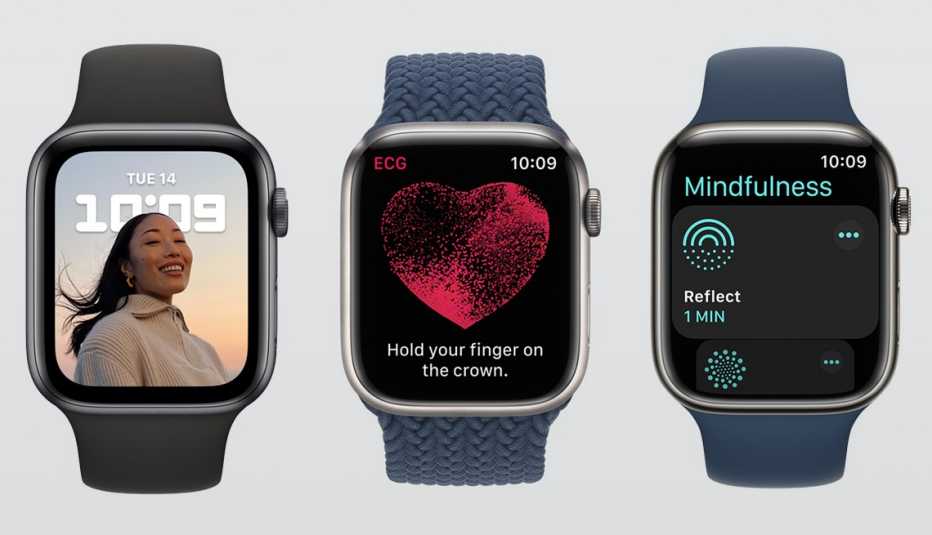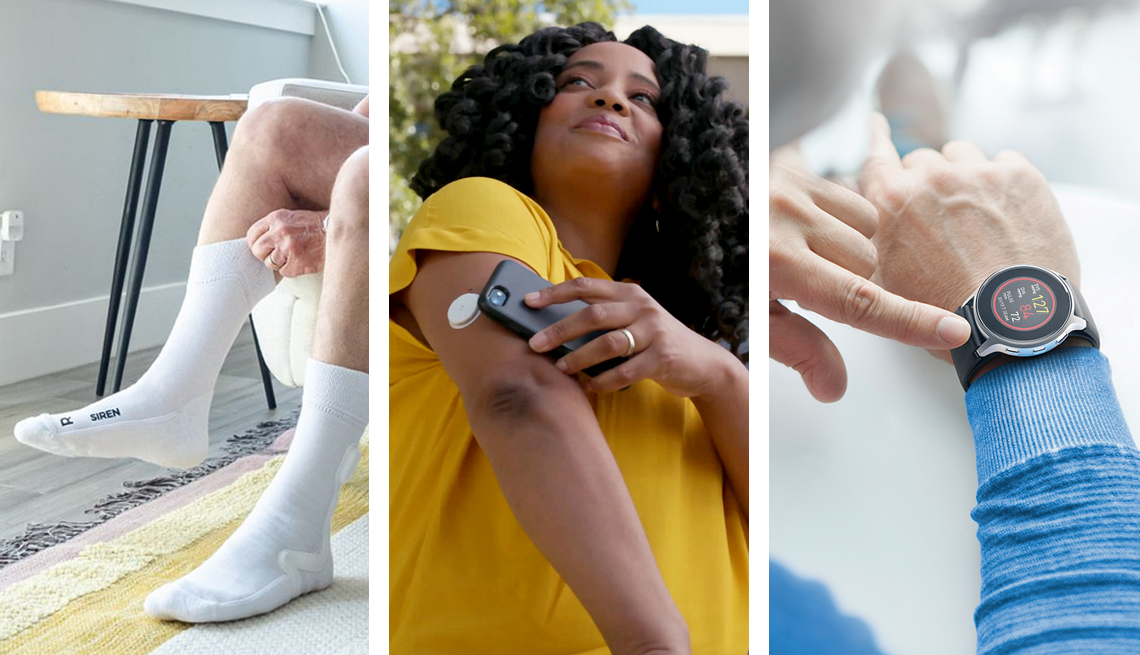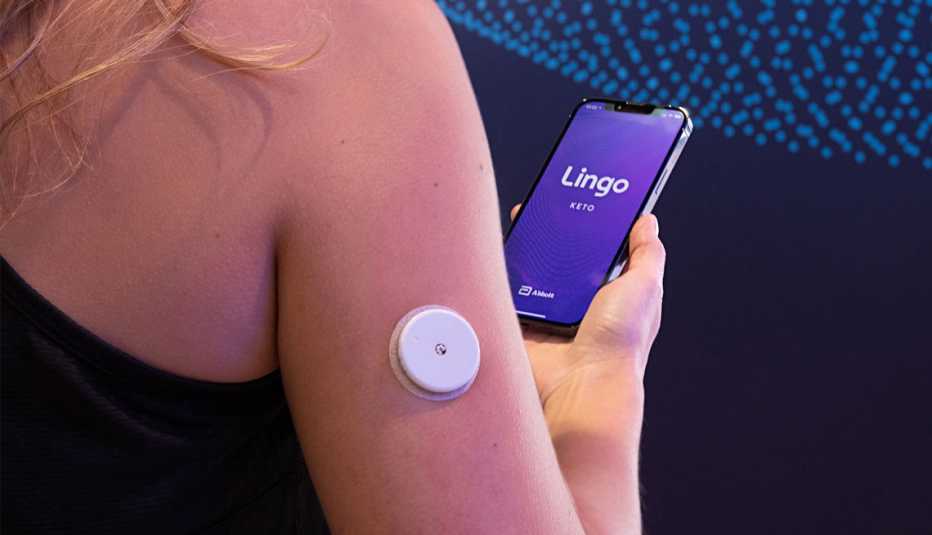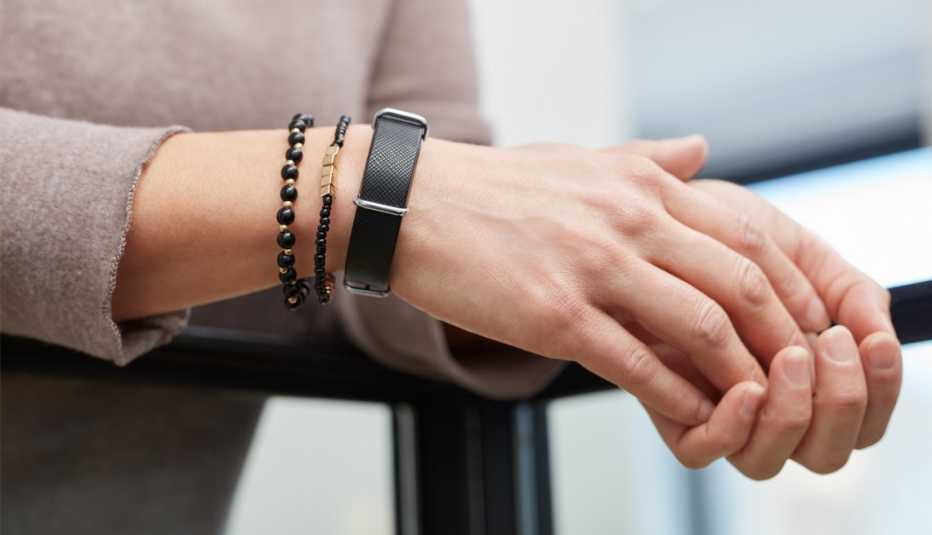Staying Fit
You wear a sensor on the back of your arm that continuously monitors your blood glucose level and dispatches alerts if a reading is too high or low.
You don “smart” socks that may help you avoid diabetic foot ulcers, or perhaps a smart ring on your finger that tells you your heart rate and how well you’re sleeping. And the increasingly intelligent watch on your wrist flags irregular heartbeats and summons help should you fall and become incapacitated.


AARP Membership— $12 for your first year when you sign up for Automatic Renewal
Get instant access to members-only products and hundreds of discounts, a free second membership, and a subscription to AARP the Magazine.
Activity trackers, smartwatches and other health-related wearables do a lot more these days than count steps or let you see how many calories you’ve burned. A host of devices available now or that are in the pipeline are more deeply rooted into all aspects of your personal well-being. And in certain instances, they provide U.S. Food and Drug Administration (FDA)-approved medical grade features for people with diabetes, hypertension and other conditions


Mass-market smartwatches go all in on health
You may have bought an Apple Watch, Samsung Galaxy Watch or Fitbit (now owned by Google) as a motivator to get off your duff and crush your exercises. Or maybe you got a wearable device for features having little or nothing to do with health — such as to get notifications from your boss or to listen to music when you’re not carrying a phone.
But the smartwatches introduced in the past few years have gone all in on health, with a gaggle of potentially lifesaving medical improvements. Devices today include electrocardiogram features that can detect atrial fibrillation (A-fib), an irregular heart rhythm that is a common cause of stroke, as well as monitors for blood oxygen levels that can indicate early signs of circulatory, heart or lung function issues such as anemia, neurological problems or sleep disorders.
More than 18 million workouts, mainly consisting of people walking, running and cycling, have been logged with the Apple Watch and other data sources in the Apple Health app, as part of an ongoing, voluntary Apple Heart and Movement Study. Apple is conducting the study, launched in November 2019, along with Brigham and Women’s Hospital in Boston and the American Heart Association.
Older Americans are exercising
Preliminary data revealed that 54 percent of participants age 65 and older were most likely to complete more than 150 minutes of activity a week, the recommended amount for general health, according to Calum MacRae, M.D., principal investigator of the study and an associate professor at Harvard Medical School.
What’s more, 41 percent of participants 60 and older met criteria for an “above average” level of cardio fitness, or more than 200 minutes of activity each week; 27 percent of this group met “high” level criteria, or more than 300 minutes. People in the 65-and-older cohort had a much higher percentage of walks as their most common activity compared to younger folks.
“We were excited to see that so many of the older study participants were achieving the recommended exercise metrics.”
“We were excited to see that so many of the older study participants were achieving the recommended exercise metrics,” MacRae says. He thinks that older people could be the most active for several reasons, among them the possibility that people who are retired may have more time for exercise.
At the end of September 2021, more than half of U.S. adults 55 and older are indeed now retired, according to a recent study from the Washington-based Pew Research Center.
“We’re only scratching the surface of what we can learn from the Apple Heart and Movement Study, and we’re looking forward to digging in further to understand the basis of these and many other observations,” MacRae says.
At the very least, wearables may give you and your doctor a greater visibility into your body that was not as readily apparent before because they let you capture data more frequently. What you see may trigger alerts if potentially serious health issues percolate.



































































